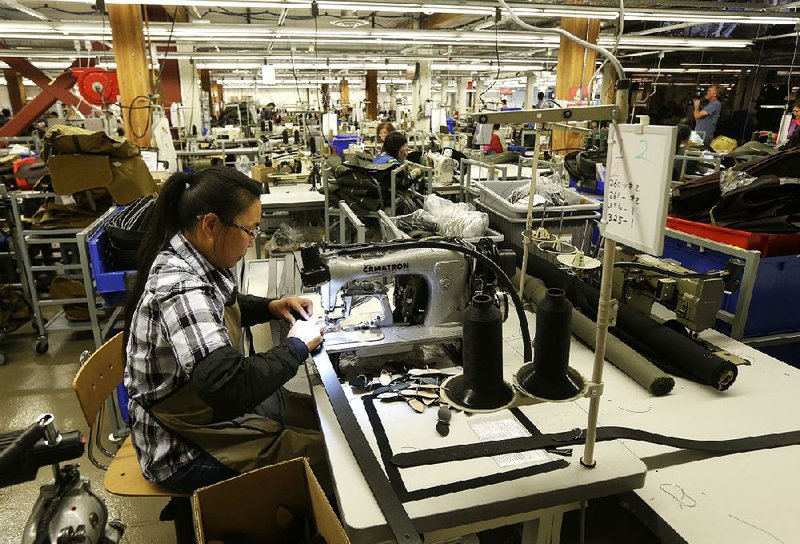WASHINGTON -- A slump in the auto industry drove U.S. factory output down in July and has kept it flat for months.
The Federal Reserve said Thursday that factory production dropped 0.1 percent last month, pulled down by a 3.5 percent drop in output of cars, trucks and auto parts. Auto production has dropped for three straight months and is down 5 percent over the past year. Auto sales, which have been strong in recent years, skidded 7 percent in July.
The drop in automotive production was partially offset in July by a 0.2 percent rise in other manufacturing output.
Overall industrial production -- which adds output by mines and utilities -- rose 0.2 percent, the Fed said. Mining output rose 0.5 percent, and utility production rose 1.6 percent.
The monthly data, which are volatile and often get revised, contrast with other recent reports. While the Institute for Supply Management's factory index eased in July from the second-highest level since 2011, it showed steady growth in production, orders and employment. The latest Empire State Manufacturing survey for August also posted a strong gain.
Recent survey data "point to much improved conditions in the manufacturing sector (as do the less reliable regional indices), " Joshua Shapiro, chief U.S. economist at Maria Fiorini Ramirez Inc., wrote after the report. "We expect the underlying trend of reported output to gradually accelerate in the months ahead, although ongoing inventory adjustment in the automotive sector will continue to weigh."
American manufacturers had bounced back from a slump in late 2015 and early 2016 caused by cutbacks in the energy industry and a strong dollar, which makes U.S. goods costlier in foreign markets. But the Fed said manufacturing output was little-changed from February through July.
Other recent reports on American manufacturing have looked stronger.
The Federal Reserve Bank of New York on Tuesday reported that factory activity in New York shot up to the highest level in nearly three years.
The Commerce Department reported earlier this month that orders at U.S. factories surged in June on strong demand for civilian aircraft. The Institute for Supply Management reported that American factories expanded in July for the 11th straight month.
Factories have hired 66,000 workers since July 2016, the biggest 12-month gain in nearly a year and a half.
Ian Shepherdson, chief economist at Pantheon Macroeconomics, said the Fed's report Thursday is "is very hard to square" with other manufacturing indicators. He expects to see "a clear and substantial rebound in August" or an upward revision in the July figures.
"The manufacturing recovery continues, after the hit from collapsing oil sector ... but progress is slow," Shepherdson wrote in a research note.
The Fed inadvertently released the report on its website before the scheduled release time of 9:15 a.m. Eastern.
JOBLESS-AID REQUESTS
A second economic report Thursday, the Labor Department's weekly measure of applications for unemployment benefits, showed fewer Americans applied last week. The number of people seeking benefits remained near historic lows.
Weekly unemployment applications fell by 12,000 to a seasonally-adjusted 232,000, the Labor Department said Thursday. The less volatile four-week average slipped 500 to 240,500. The number of people collecting unemployment benefits has fallen 9 percent over the past 12 months to 1.9 million.
Economists say the job market appears solid as the U.S. enters its ninth year of recovery from the recession. Employers are holding on to workers with the expectation that business will continue to improve. Unemployment claims, which closely track layoffs, have come in below 300,000 for 128 weeks in a row. That's the longest such stretch since 1970, when the U.S. population was much smaller.
The unemployment rate has fallen to a 16-year low of 4.3 percent. The government's report for July showed that U.S. employers added 209,000 jobs. More Americans have been coming off the sidelines and finding jobs.
Information for this article was contributed by Paul Wiseman of The Associated Press and Shobhanna Chandra of Bloomberg News.
Business on 08/18/2017
